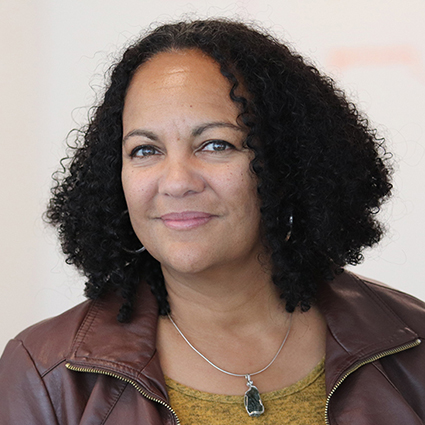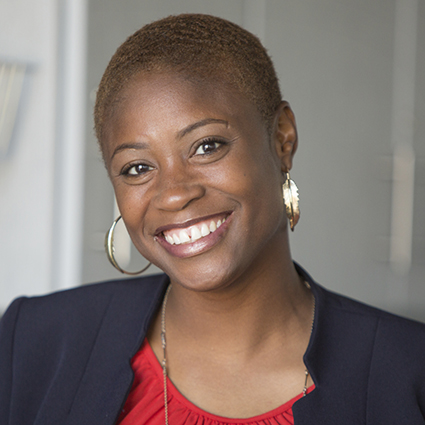 The police killing of George Floyd sparked nationwide protests and has prompted many parents to consider how to talk to their children about race, racism, and injustice. Experts say it's important to have the talk, even if it's awkward and even if you don't have all the answers.
The police killing of George Floyd sparked nationwide protests and has prompted many parents to consider how to talk to their children about race, racism, and injustice. Experts say it's important to have the talk, even if it's awkward and even if you don't have all the answers.By Matthew Hansen, Managing Editor
The mother figured it was time to talk to her eldest son about race, and how Americans put people in categories based on skin color.
This mom is of South Asian ancestry, and has brown skin. Her husband is white. Their 5-year-old son’s complexion is like his mother’s.
 Lisa Roy
Lisa Roy“What color is Daddy’s skin?” she asked the 5-year-old. “Kind of pink,” he said.
“Yes it is! And what does that make him?” she asked the 5-year-old, trying to get him to see the link between Dad’s skin color and his racial identity.
The boy paused for a moment, struggling for an answer.
“What does that make him?” she asked again.
“Better than us?” the boy replied.
The boy’s answer broke Amy Mart’s heart the first time her friend—the mother in this story—repeated it to her.
The boy’s answer is heartbreaking in part because it makes tragically perfect sense. This preschooler was simply summarizing what America had already taught him.
“Kids are little scientists. Their brains are always trying to make sense of the world around them, assigning meaning to things like race,” says Mart, the Buffett Early Childhood Institute’s director of professional learning and a former Chicago Public Schools teacher and administrator.
“If they don’t have help to make sense of what they are seeing, if we don’t constantly give them guidance, they will regurgitate what they observe in society.”
In May, Americans watched video of an unarmed 46-year-old African American security guard named George Floyd call out for his mother as a police officer knelt on his neck for nearly nine minutes. Floyd’s killing sparked nationwide protests. It also is prompting many parents—especially white parents—to reconsider their own thinking about how, and how much, to talk to their children about race, racism, and injustice.
But how do you have these weighty conversations with a child? What can a parent do to make sure that their child grows up to be part of a new solution instead of part of an age-old problem?
 Dalhia Lloyd
Dalhia LloydIt starts with the willingness to talk, even if it’s awkward and even though you don’t have all the answers, say three experts in early childhood education.
This conversation about race, racism, and injustice is commonplace in African American homes, says Lisa Roy, the Buffett Institute’s director of program development. She emphasized to her three African American children that they should be proud of their race and family history, which includes five generations of college graduates, but also warned that racism could make their path to adulthood tougher—that they would have to work twice as hard to get as far as their white classmates.
Roy often tells her granddaughter that she is every bit as smart and as beautiful as Elsa and Anna and every other white movie princess her granddaughter adores. She tries to counteract societal messaging that often suggests to children of color that white people are prettier, smarter, better.
“My granddaughter deserves the same opportunity to feel good about herself, to accomplish all the things she wants to accomplish, without having other children see her as somehow not as valuable,” Roy says.
A real conversation about racism and injustice is far less likely in white homes, experts say. White parents often feel that their young children aren’t aware of race, and that talking about race and racism could damage their kids’ ability to see the world in a colorblind way.
It’s an understandable assumption, the experts say.
It’s also wrong.
Research shows that white children as young as 3 and 4 associate white faces with positive traits and faces of color with negative traits. Studies also show that white children begin to profess a strong preference for white playmates. At that age, society is already teaching them to view white children as the most popular and the most powerful.
“We live in a racialized society, and children are observing and absorbing everything going on in society, including the family’s silence on race,” says Dalhia Lloyd, a family and community program specialist for the Buffett Institute who previously ran early childhood services at Omaha’s Child Saving Institute. “Without truly understanding issues of race, white children develop this narrative that can actually foster racial bias.”
 Amy Mart
Amy Mart“It’s practically in the groundwater,” says Mart. “There is no way to shield kids from this.”
To have awkward conversations about race, Mart says, focus on a fundamental idea that kids already understand: Fairness.
When your very young child notices differences in skin color—even pointing out those differences in a public place, like a grocery store—resist the urge to shush them, Mart says. Instead, validate their observation, and explain to them that their white skin and the woman in the produce aisle’s brown skin are different, but are both beautiful.
Make sure your child is reading books and watching shows that have heroes and role models who are different colors and races, the experts say. As much as possible, make sure your child meets, talks to, and plays with a racially and ethnically diverse group of people. Research shows that this can have a massive impact on their later attitudes about race and racism.
As the child grows older—perhaps by preschool—point out injustice when you see it happening in the world.
The vast majority of CEOs and political leaders and people with power are white. That doesn’t seem fair, does it?
“There absolutely needs to be a conversation about these realities,” says Dr. Kerry Ann-Escayg, a University of Nebraska at Omaha education professor who researches racism and anti-racism in early childhood education. “Without them, you are allowing children to continue the status quo. And to ultimately reproduce that status quo.”
Explain to them that, for a long time, white people could live wherever they wanted, but people of black or brown skin color could only live in certain neighborhoods, Mart says. Even today, they may not feel comfortable in every neighborhood in our city. That’s not fair, is it?
And, Mart says, she has explained to her own 4-year-old that while she feels safe around police, and feels fairly treated by them, many people with black or brown skin do not feel safe, because they have been treated unfairly by police.
 Kerry-Ann Escayg
Kerry-Ann EscaygYou can use these discussions to help your child build awareness of the very real world around them. You can use it to hone your child’s ability to empathize with people different than they are. And you can teach them about injustice in a way that allows them to feel emotions, like anger or sadness, while also giving them the tools to deal with that anger and sadness.
None of this happens, Escayg says, unless white parents are willing to grapple with these issues themselves, willing to challenge old stereotypes they may have learned as children.
But if it does happen, it can be powerful, she says. These parents can help shape a better future for children harmed by racism, and their own children, too.
“Parents, white parents, who are interested, who see the value in having these discussions about racism with young children, you are effectively starting your child on a journey that will help him or her in the long run,” says Escayg. “You are creating an agent of change. Do not for a second dismiss the value of your work.”
Watch Early Years Matter Conversations on this topic with Amy Mart and with Lisa Roy and Dalhia Lloyd.
Matthew Hansen, the managing editor of the Buffett Early Childhood Institute at the University of Nebraska, is an award-winning journalist tasked with telling the stories of the Institute's work and early childhood care and education in Nebraska and beyond.
His columns can be read at https://buffettinstitute.nebraska.edu/news-and-events/early-years-matter.